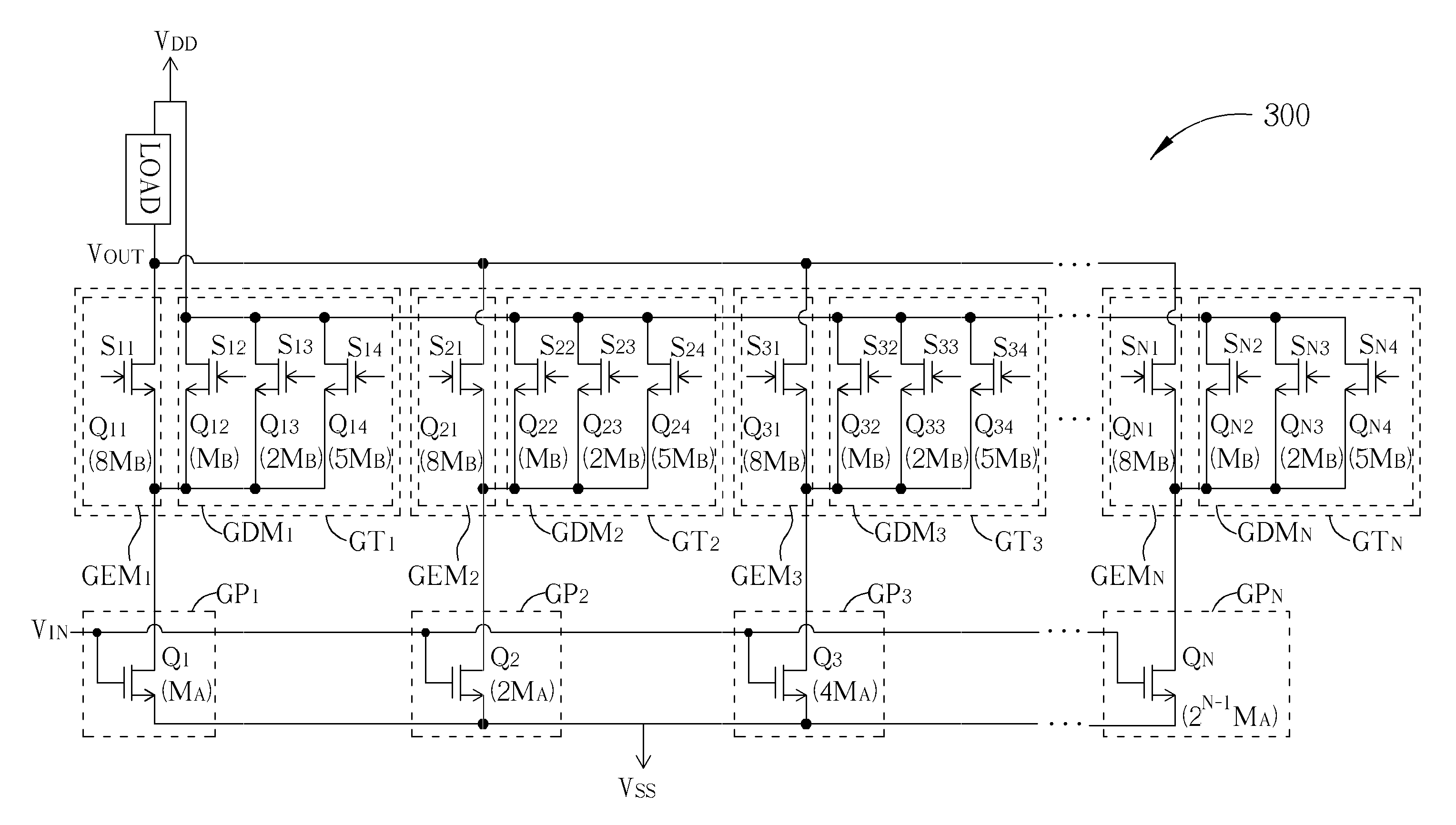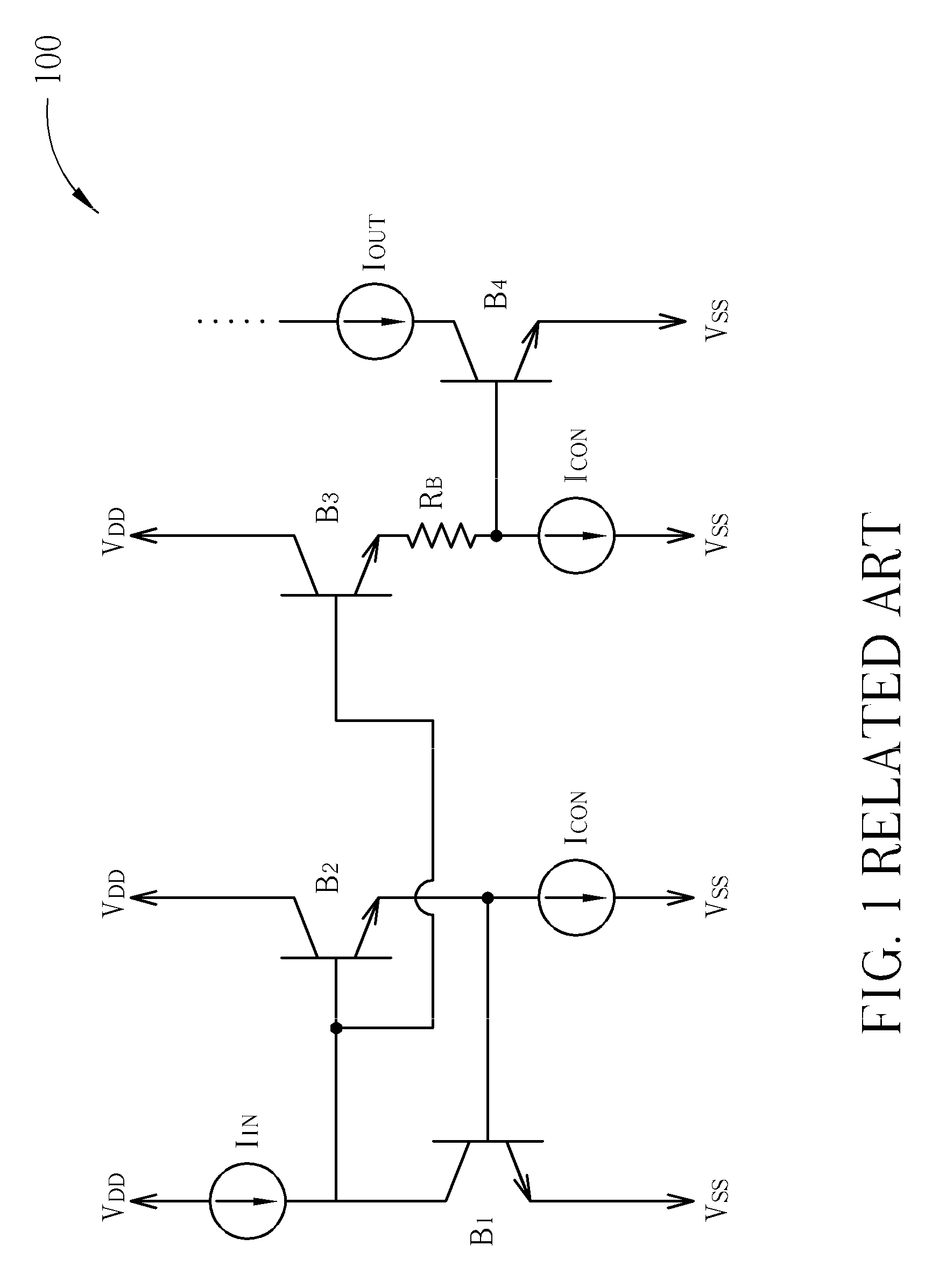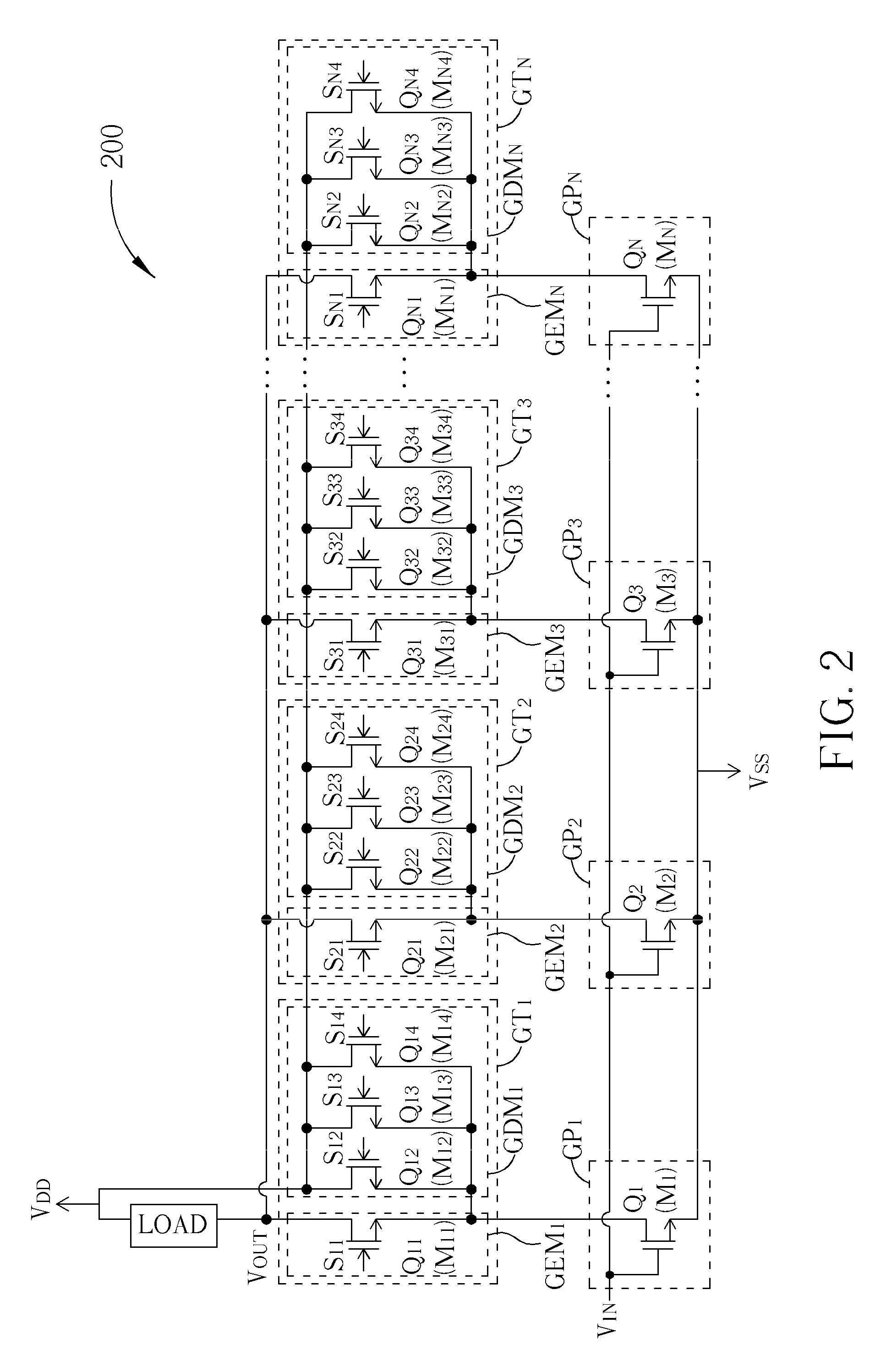Programmable gain MOS amplifier
a mos amplifier and programmable gain technology, applied in the direction of amplifiers with field-effect devices, gain control, gated amplifiers, etc., can solve the problem of complicated linear adjustment of gain in db
- Summary
- Abstract
- Description
- Claims
- Application Information
AI Technical Summary
Benefits of technology
Problems solved by technology
Method used
Image
Examples
first embodiment
[0019]Please refer to FIG. 2. FIG. 2 is a diagram illustrating a MOS amplifier 200 according to the present invention. As shown in FIG. 2, the MOS amplifier 200 comprises N gain providers GP1˜GPN, and N gain tuners GT1˜GTN.
[0020]Each gain tuner further comprises a gain enabling module GEM and a gain decreasing module GDM. For example, the gain tuner GT1 comprises the gain enabling module GEM1 and the gain decreasing module GDM1. Each gain enabling module GEM is realized with a MOS transistor. For example, the gain enabling module GEM1 is realized with the MOS transistor Q11 having an aspect ratio M11. Each gain decreasing module GDM is realized with three MOS transistors. For example, the gain decreasing module GDM1 is realized with the MOS transistors Q12, Q13, and Q14 having aspect ratio M12, M13, and M14, respectively. Each gain tuner corresponds to a gain provider. For example, the gain tuner GT1 corresponds to the gain provider GP1. Additionally, the sum of the aspect ratios of...
second embodiment
[0032]Please refer to FIG. 4. FIG. 4 is a diagram illustrating a MOS amplifier 400 according to the present invention. As shown in FIG. 4, the MOS amplifier 400 comprises two gain providers GP1 and GP2, two gain tuners GT1 and GT2, N gain providers GPT1˜GPTN, and N gain tuners GTTI˜GTTN.
[0033]The functional description for the gain providers, the gain tuners in FIG. 4 is similar to those components in FIG. 2 and is omitted. However, structurally, MOS amplifier 400 is slightly changed according to the MOS amplifier 200. As shown in FIG. 4, only two gain providers GP1 and GP2 and their corresponding gain tuners GT1 and GT2 are utilized for low gain adjustment range, but N gain provider GPT1˜GPTN and their corresponding gain tuners GTT1˜GTTN are utilized for high gain adjustment range. More particularly, the aspect ratios of the MOS transistors Q1 and Q2 respectively of the gain providers GP1 and GP2 can be designed to be M1 and 2M1 and the aspect ratio of the MOS transistor QT1 of the...
third embodiment
[0036]Please refer to FIG. 5. FIG. 5 is a diagram illustrating a MOS amplifier 500 according to the present invention. The MOS amplifier 500 is disclosed as a design example for 36 dB gain adjustment range. As shown in FIG. 5, the MOS amplifier 500 comprises the gain providers GP5, GP6, GP7, GP8, GP9, and GP10, and the gain tuners GT5, GT6, GT7, GT8, GT9, and GT10. It is noticeable that each of the gain tuners GT5, GT8, GT9, and GT10 only comprises the gain enabling module, and the corresponding gain decreasing module is saved. It is noticeable that the embodiment as shown in FIG. 5 is designed as the above-mentioned mechanism that when the input impedance variation is not important in the design, the gain decreasing modules for the high gain adjustment can be removed.
[0037]The aspect ratios of the MOS transistors Q5, Q6, Q7, Q8, Q9, and Q10 of the gain providers GT5, GT6, GT7, GT8, GT9, and GT10 are designed to be M5, M5, 2M5, 4M5, 8M5, and 16M5, respectively. In the gain tuner GT6...
PUM
 Login to View More
Login to View More Abstract
Description
Claims
Application Information
 Login to View More
Login to View More - R&D
- Intellectual Property
- Life Sciences
- Materials
- Tech Scout
- Unparalleled Data Quality
- Higher Quality Content
- 60% Fewer Hallucinations
Browse by: Latest US Patents, China's latest patents, Technical Efficacy Thesaurus, Application Domain, Technology Topic, Popular Technical Reports.
© 2025 PatSnap. All rights reserved.Legal|Privacy policy|Modern Slavery Act Transparency Statement|Sitemap|About US| Contact US: help@patsnap.com



